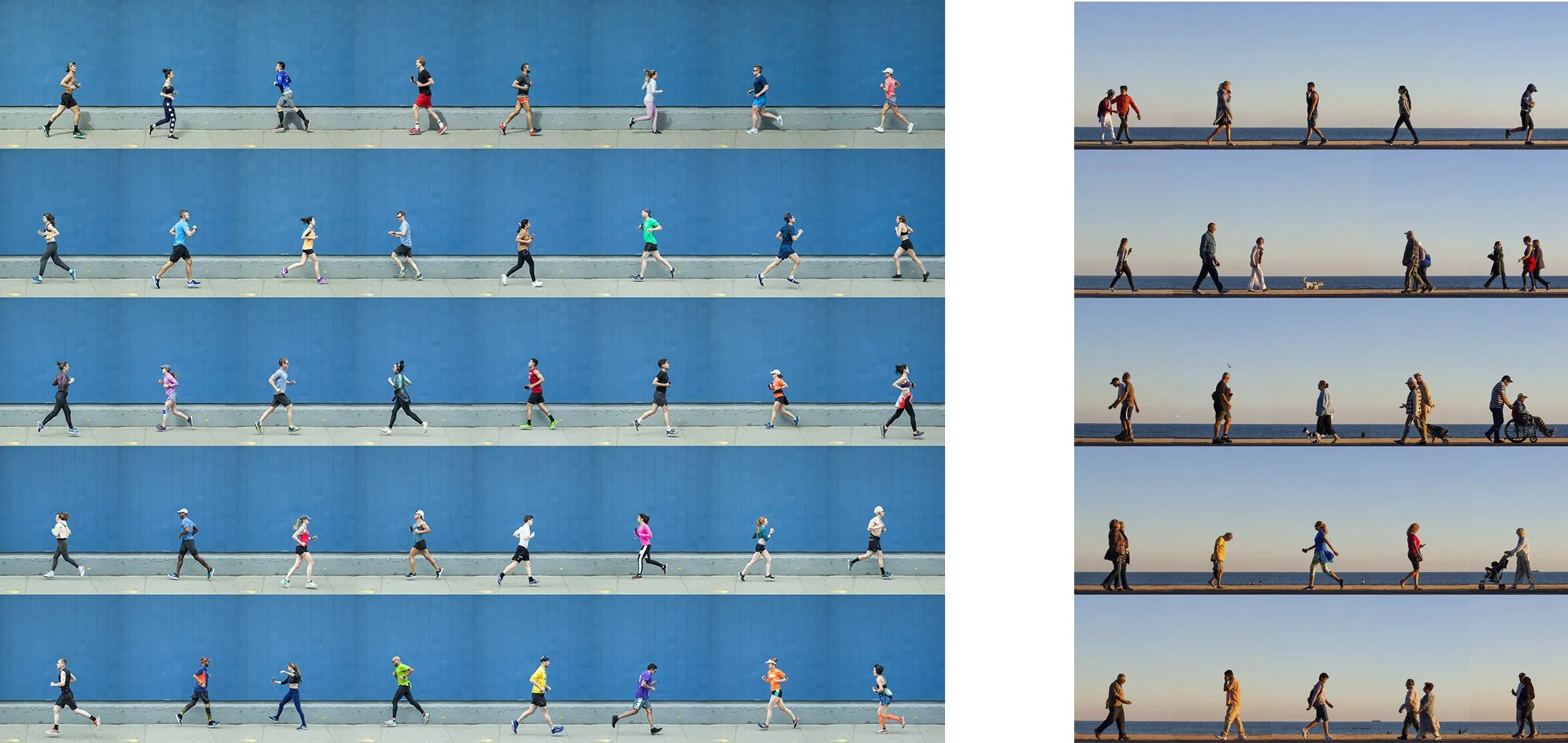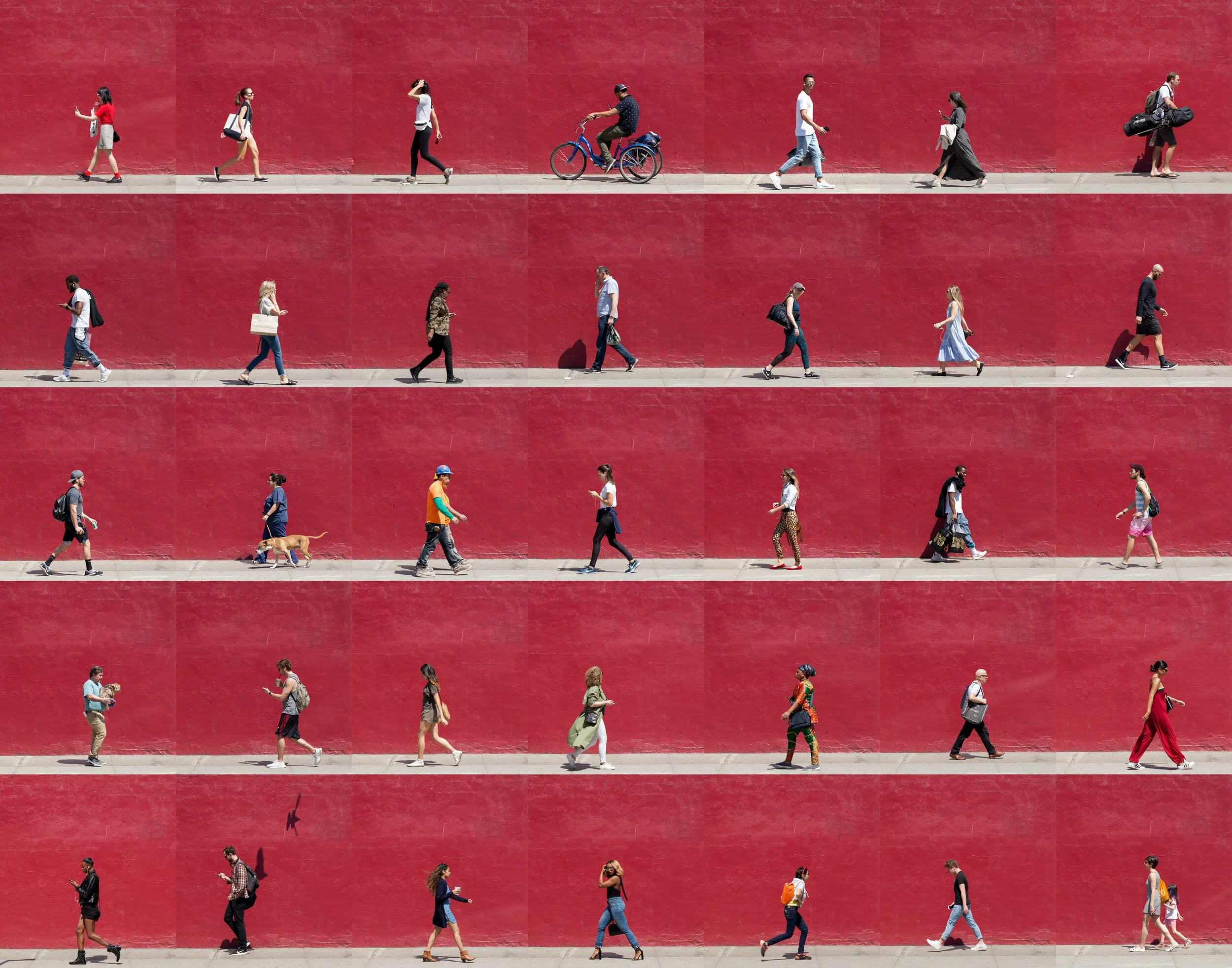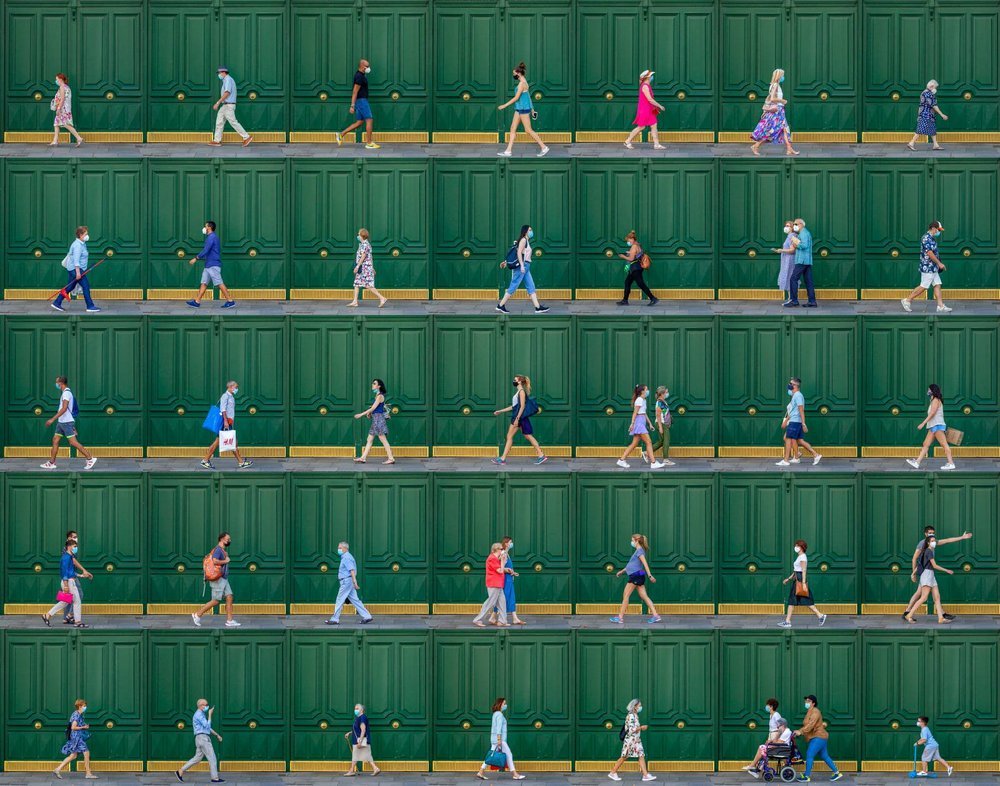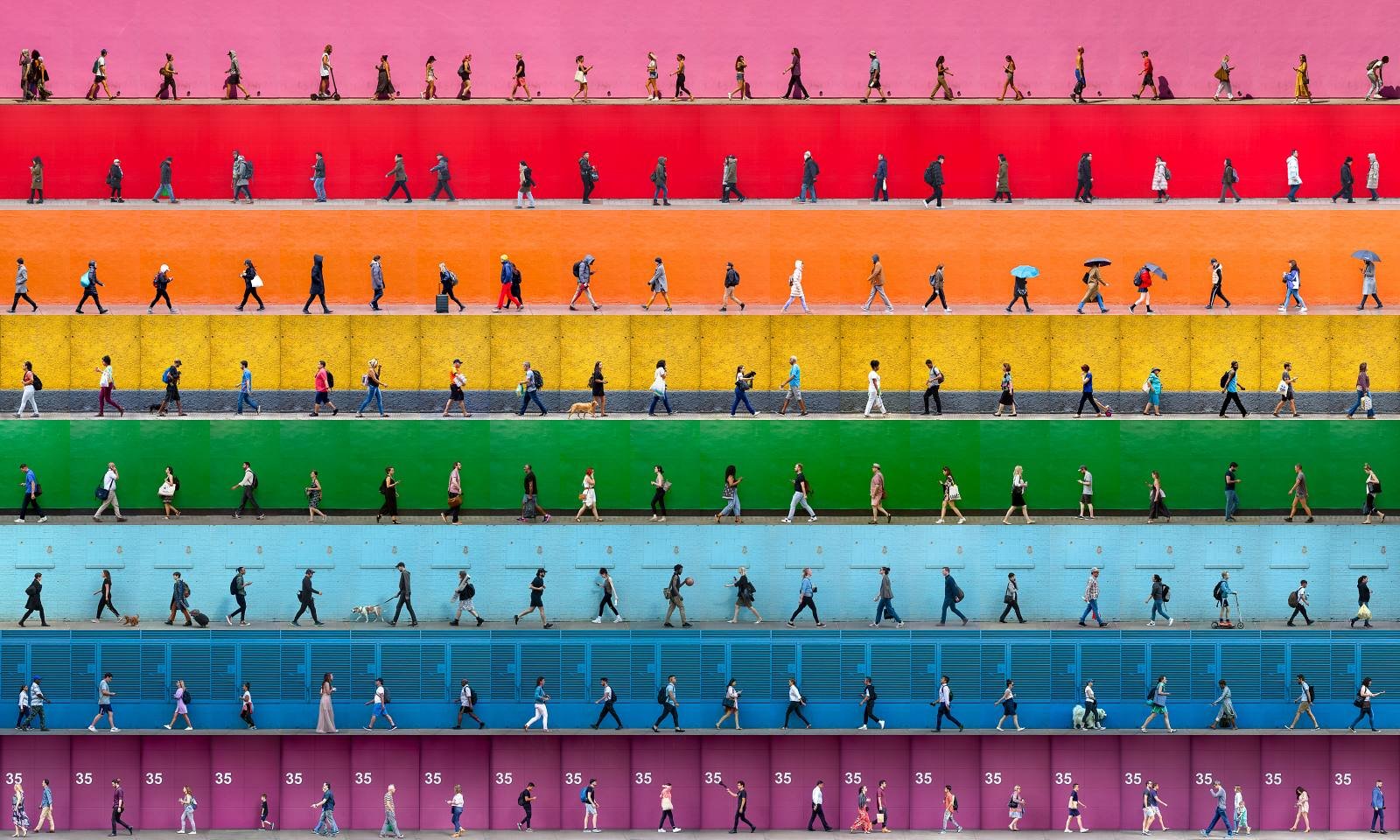by Emilie Arrago-Boruah , Anthropologist and Lecturer
University of Bordeaux et ILARA-EPHE.
In the photographic works of Xan Padrón, urban walking is no longer just an ordinary city practice; it takes on different meanings depending on whether it is done in the rain, under the sun, in familiar terrain, in urgency and quick movement, in the middle of a conversation, by the seaside, or in front of a green wall. By choosing a fixed background in the heart of one of the many cities he has explored, this renowned street photographer of Spanish origin, based in New York, perpetuates anthropologists' interest in walking, which engages not only the body but also a state of mind and a perception of the city. To do this, he offers us a series called Time Lapse, through which he artistically and humorously details unique pedestrian experiences. The title of his exhibition immediately reveals how the artist combines his love of movement and rhythm—he is also a musician—with artistic techniques. Literally, Time Lapse is a technique that reveals actions and movements that are difficult to observe at real speed. Pedestrian movements in urban environments are thus a favorable exploration ground for this technique. It took Xan Padrón's discreet eye and compositions to give meaning to this urban fact, capturing, as Marcel Mauss would say, the full-body movements when it is not at rest. Mauss was the first to talk about walking as an acquired and learned act. Here, let's outline the main assets of this photographic work for an anthropologist, but also for all exhibition visitors who will no longer see walking as a simple natural fact devoid of context but rather as a social fact of urban mobility.
Let's start by discussing how pedestrians maintain a visceral connection to the city by comparing two compositions (Calle Cristo, Trinidad, Cuba & 8th Avenue, NYC). The photographer illustrates David Le Breton's words in his book Praise of Walking (2000) when he writes, "The experience of rain is an experience of the body. The drops hit the face, wet the hair, the shoes. They make you shiver or refresh, sometimes freezing the surprised passerby." This is precisely what appears on that rainy day on 8th Avenue in Manhattan, New York. The passersby are all huddled to protect themselves from the drops, heads hunched, and eyes downcast. Nothing to see ahead. Just an instinct of protection combined with cautious walking. But Xan Padrón's comparative genius literally takes us further, to Cuba, to show us that all weather variations alter body posture and walking rhythm. On Calle Cristo in Trinidad, umbrellas are also out, but this time people are shielding themselves from the heat suggested by the shadows of pedestrians on the ground. Here too, a certain slowness in walking is explained by the heat beating down on this sun-bleached wall like a wave and a summer backdrop.
Time Lapse Calle Cristo, Trinidad, Cuba (detail). & Time Lapse 8th Avenue, NYC, (detail)
The city and its neighborhoods always exist through the uses made of them by passersby. Xan Padrón thus immortalizes some characteristic figures: the unstoppable Chelsea Piers runners, their bodies lean, sculpted by tight sportswear; lovers intertwined here and there; fashion addicts strolling with tons of bags; parents caring for their children; dog walkers; but especially the Modern Man. The latter becomes the main actor of his own movement, in an almost closed world when he escapes the city's incessant noise through his headphones or the conversation he maintains via his mobile phone. All of this photographer's works are true street portraits of the contemporary world, dotted with "small facts" that anthropologists are on the lookout for. Cyclists are also frequent, not to mention scooters mixing with pedestrians and adding even more urban mobility. Sometimes, what matters more to the background walls is precisely the rapid walking and leg movement. Conversely, when the background predominates (seaside or organic green wall), pedestrians slow down, they no longer run, they talk, fish, stroll.
= Time Lapse Chelsea Piers & Time Lapse Coney Island, NY
Clearly, this photographer's goal is to show us the soul of each city through its pedestrians. But should we see in it, as a century ago, the reflection of cultural diversity? Yes and no. We live in an era of globalization, and even if walking styles still differ from one society to another as the first anthropologists noted, diversity (religious or clothing, for example) is internal to each of his compositions; it does not come from comparing one city to another. Nevertheless, Xan Padrón's work is sometimes contradictory on this subject, and that's a good thing. Festivities and ways of dressing up are exceptions and therefore singularities, as shown in the composition on Halloween. However, when it comes to the global episode of Covid-19, we all remember the times we went out masked, as illustrated by this episode on Calle Serrano in Madrid. Not only can everyone relate to these walks across the four corners of the world, but especially because the fashion appearing in these photos has become global. It is therefore through the analysis of body language that we must appreciate this work, even if some compositions are a tribute to American citizenship (We the People) or certain minority communities (Baker's Global Rainbow).
Emilie Arrago-Boruah
Anthropologist and Lecturer
University of Bordeaux et ILARA-EPHE
Time Lapse Halloween, West Village, NYC
Time Lapse TimCalle Serrano, Madrid
Time Lapse We The People
Time lapse, Baker's Global Rainbow
And Stop By our sister gallery in Paris
to discover the latest Time Lapse by Xan Padron
Opening : Thursday June 13t 2024, 5 to 9pm
Nocturnes : Thursday Jene 21 and 27. to 9pm
Regular hours : Wednesday to Saturday, 1 to 6pm
and by appointment
Delamour gallery
53, rue de Seine (courtyard on the right)
75006 Paris
RSVP : isabelle@delamourgallery.com
Tel/ WA : +33 7 66 59 57 66






